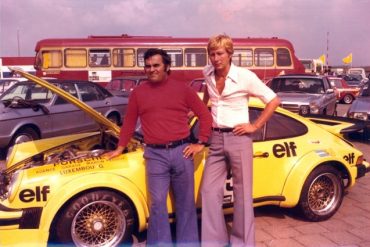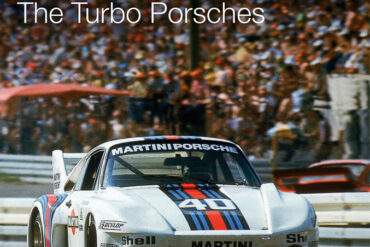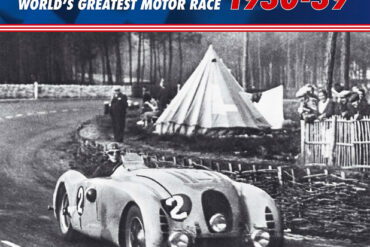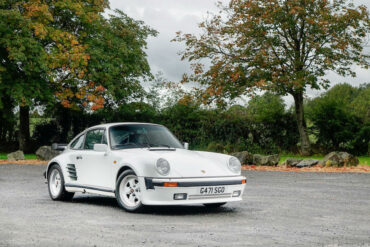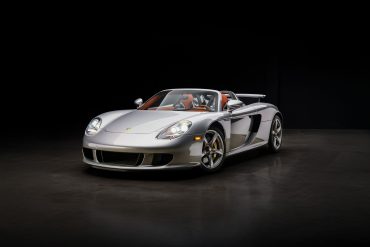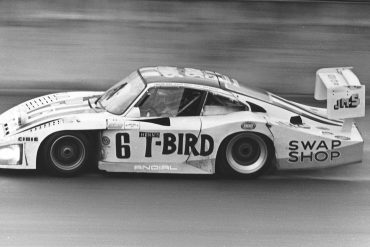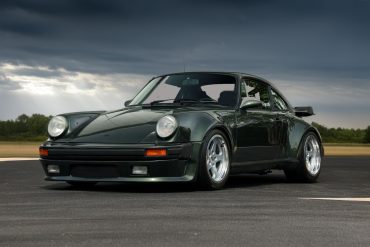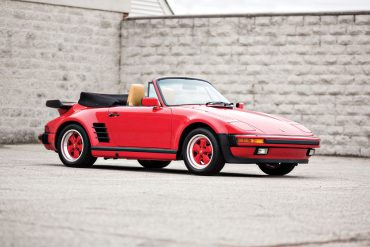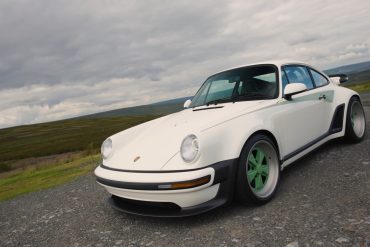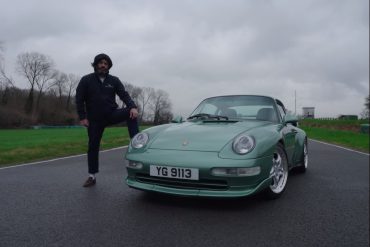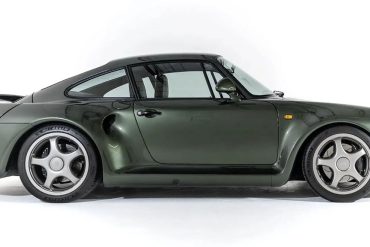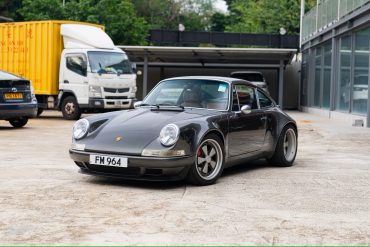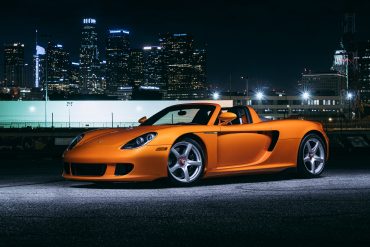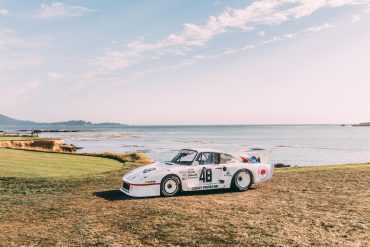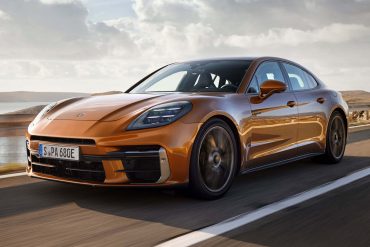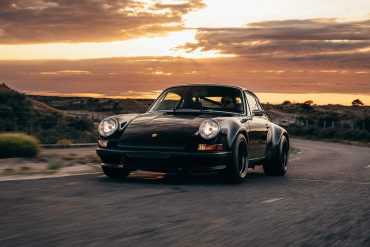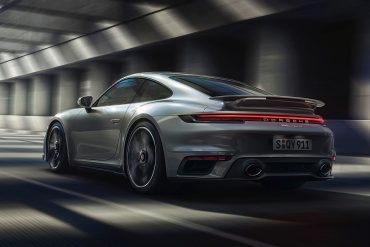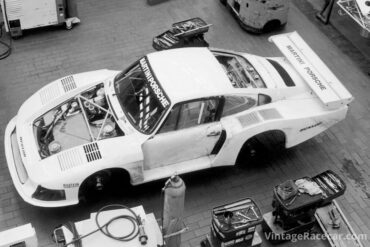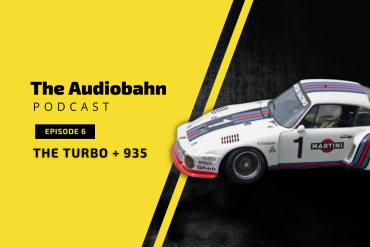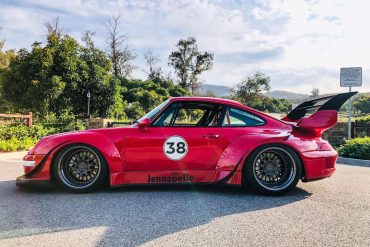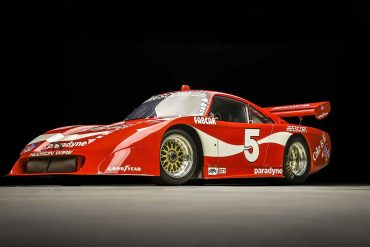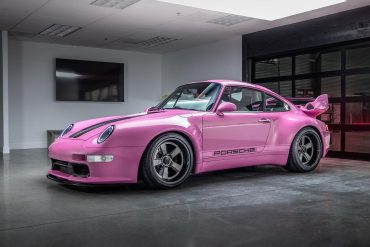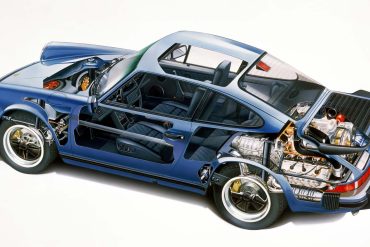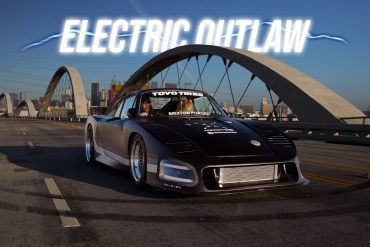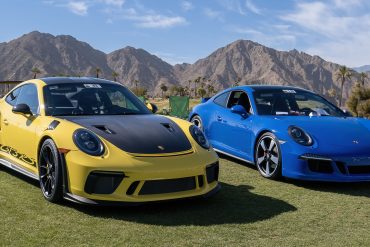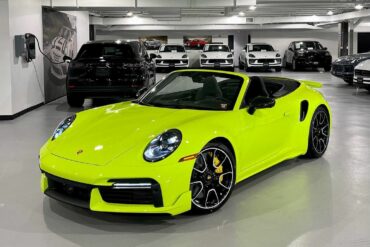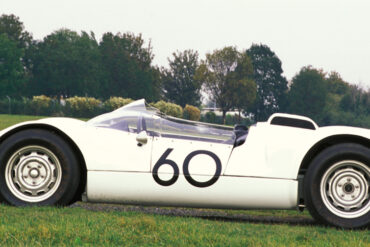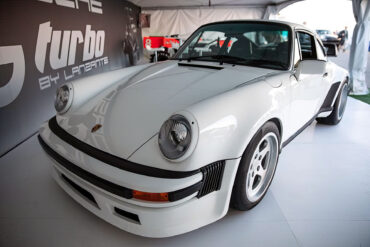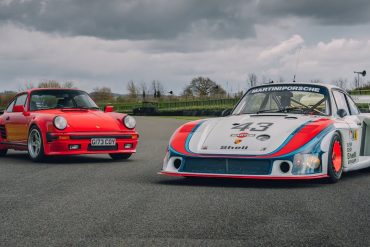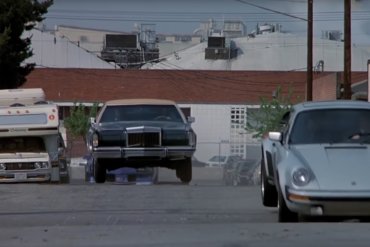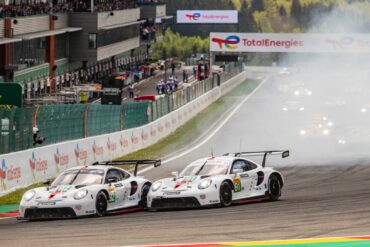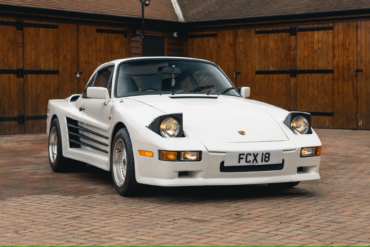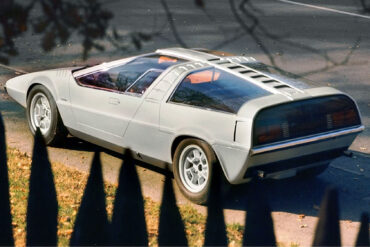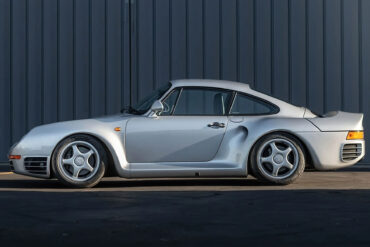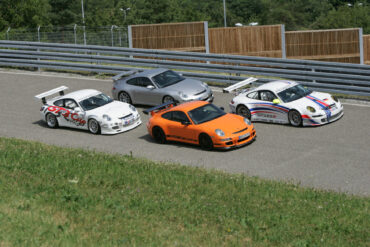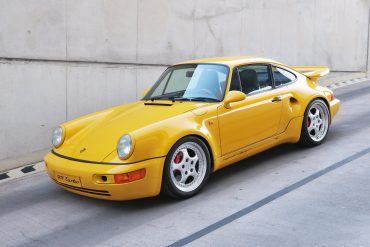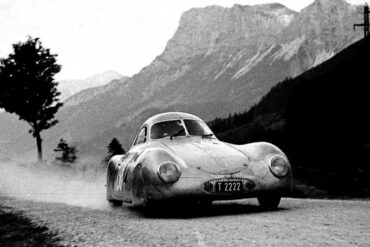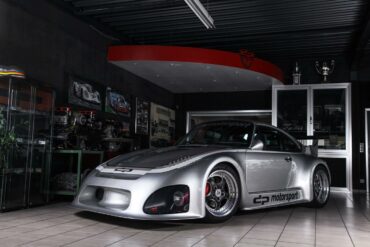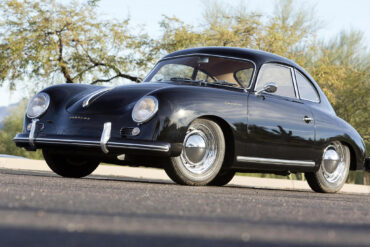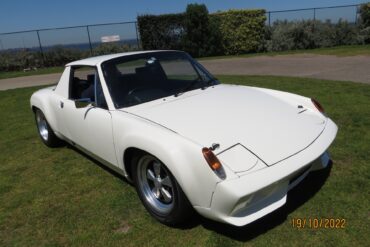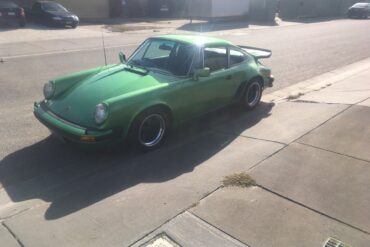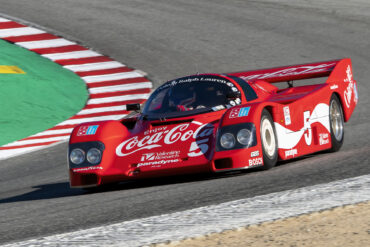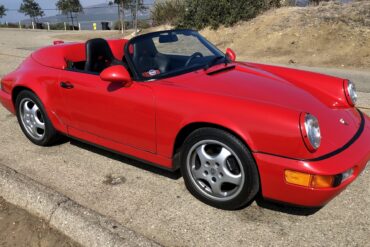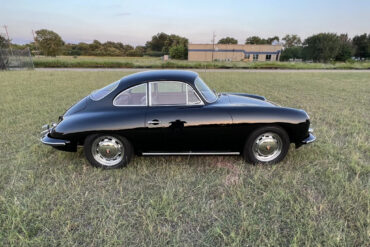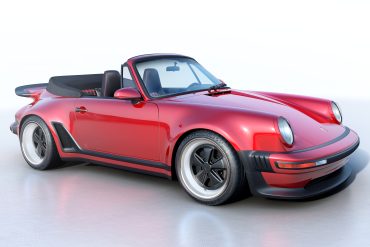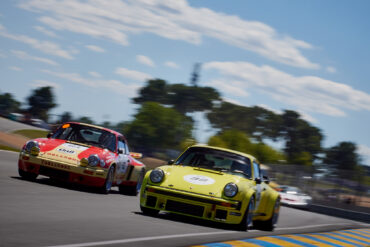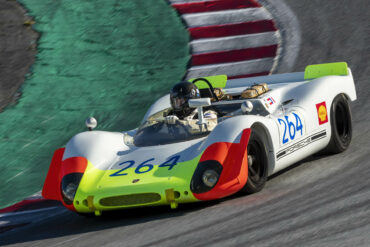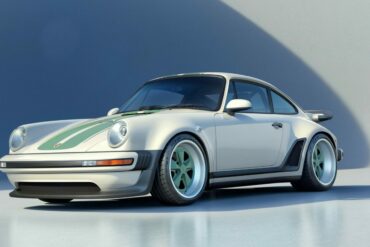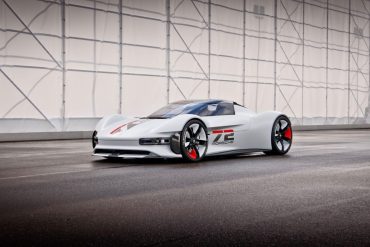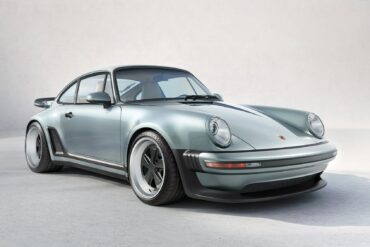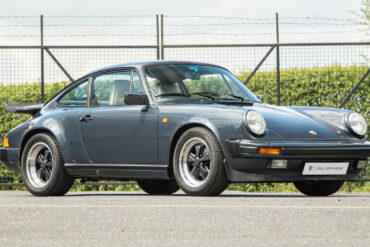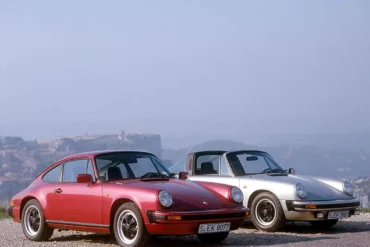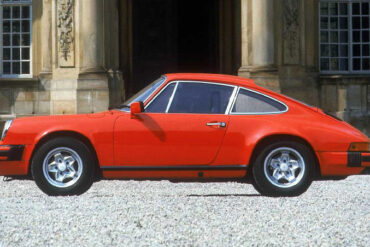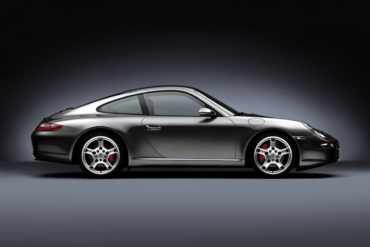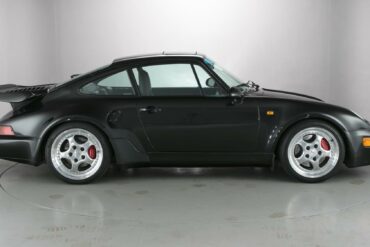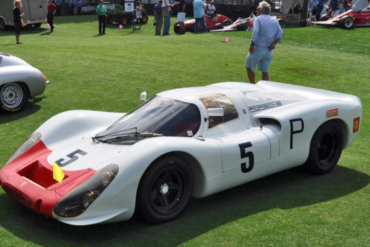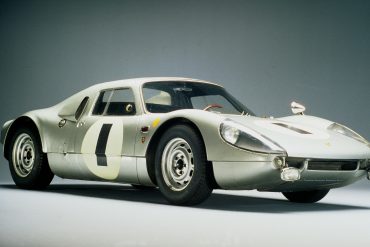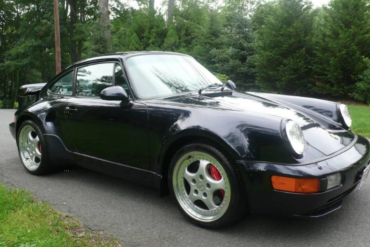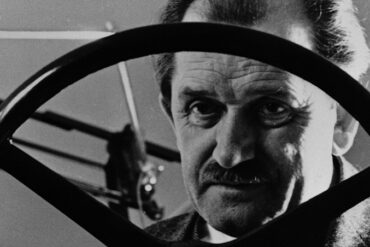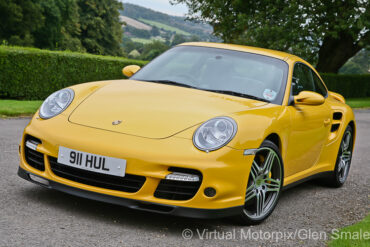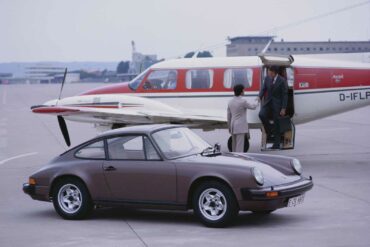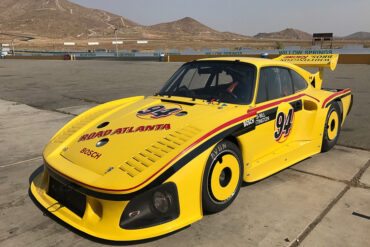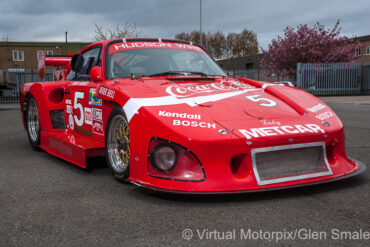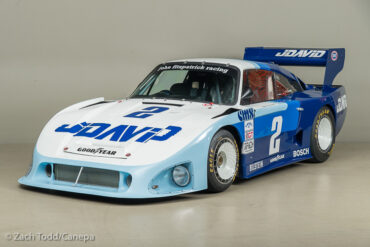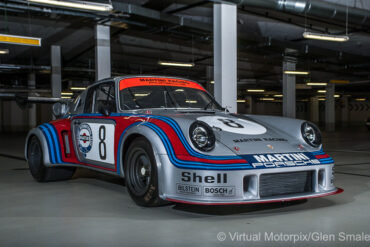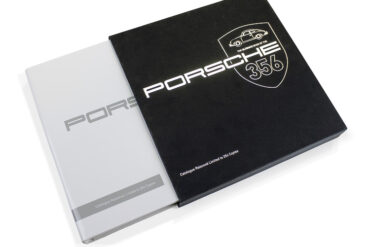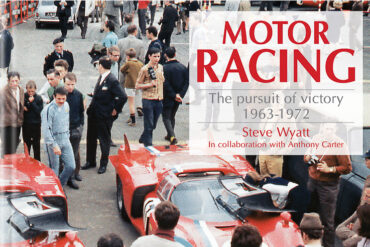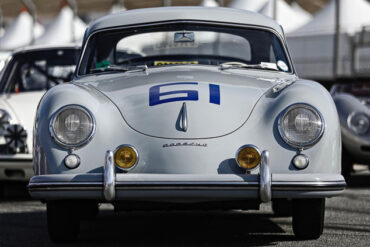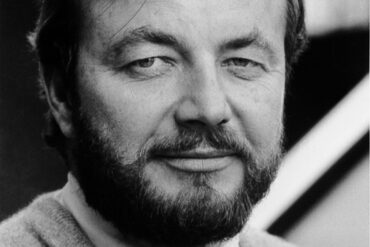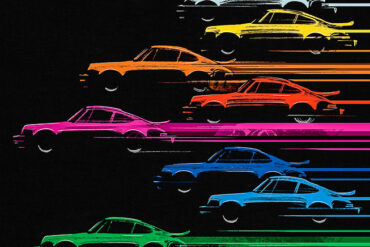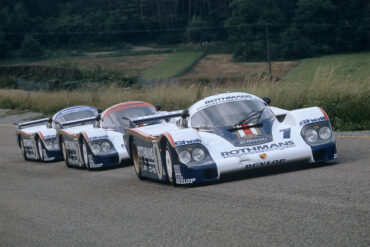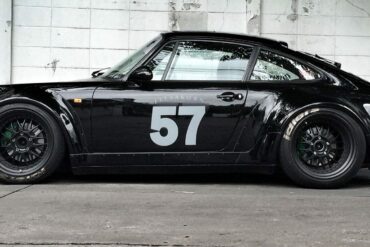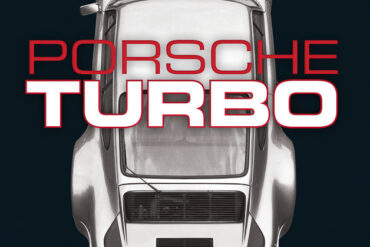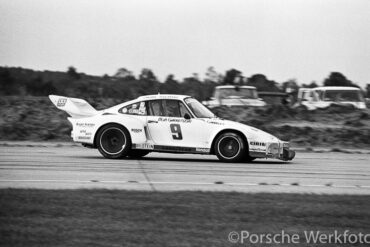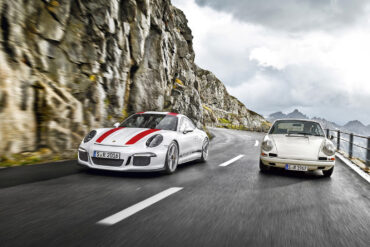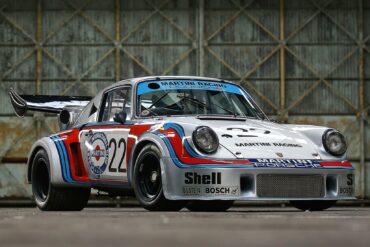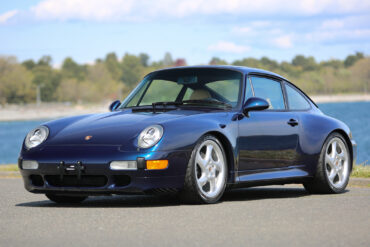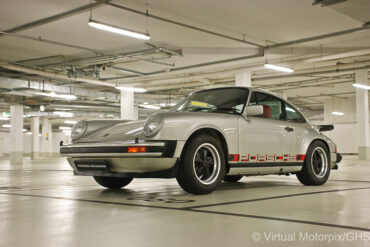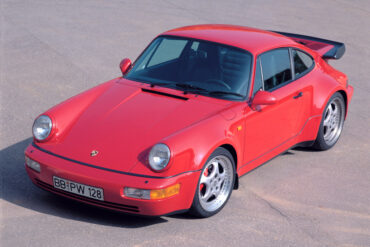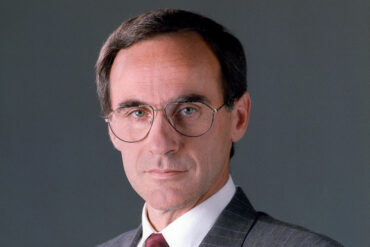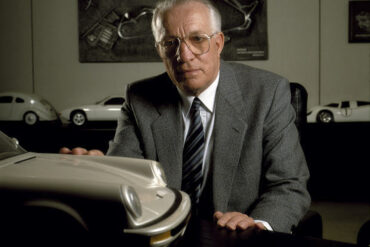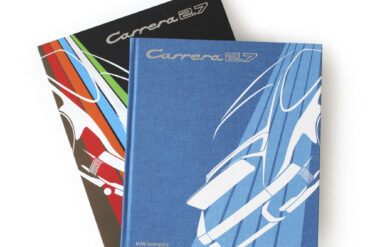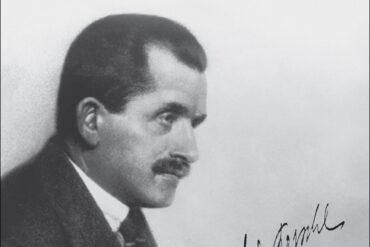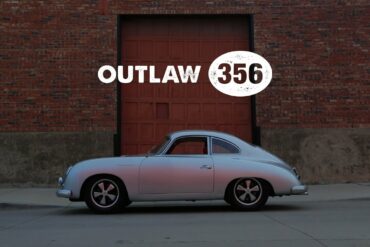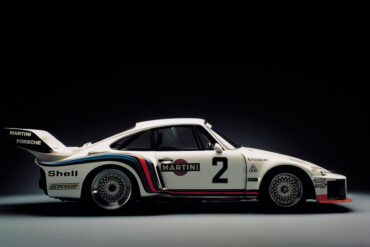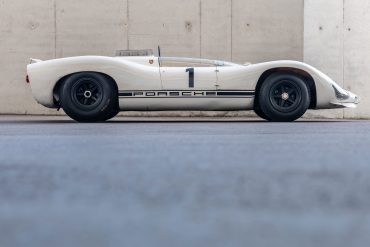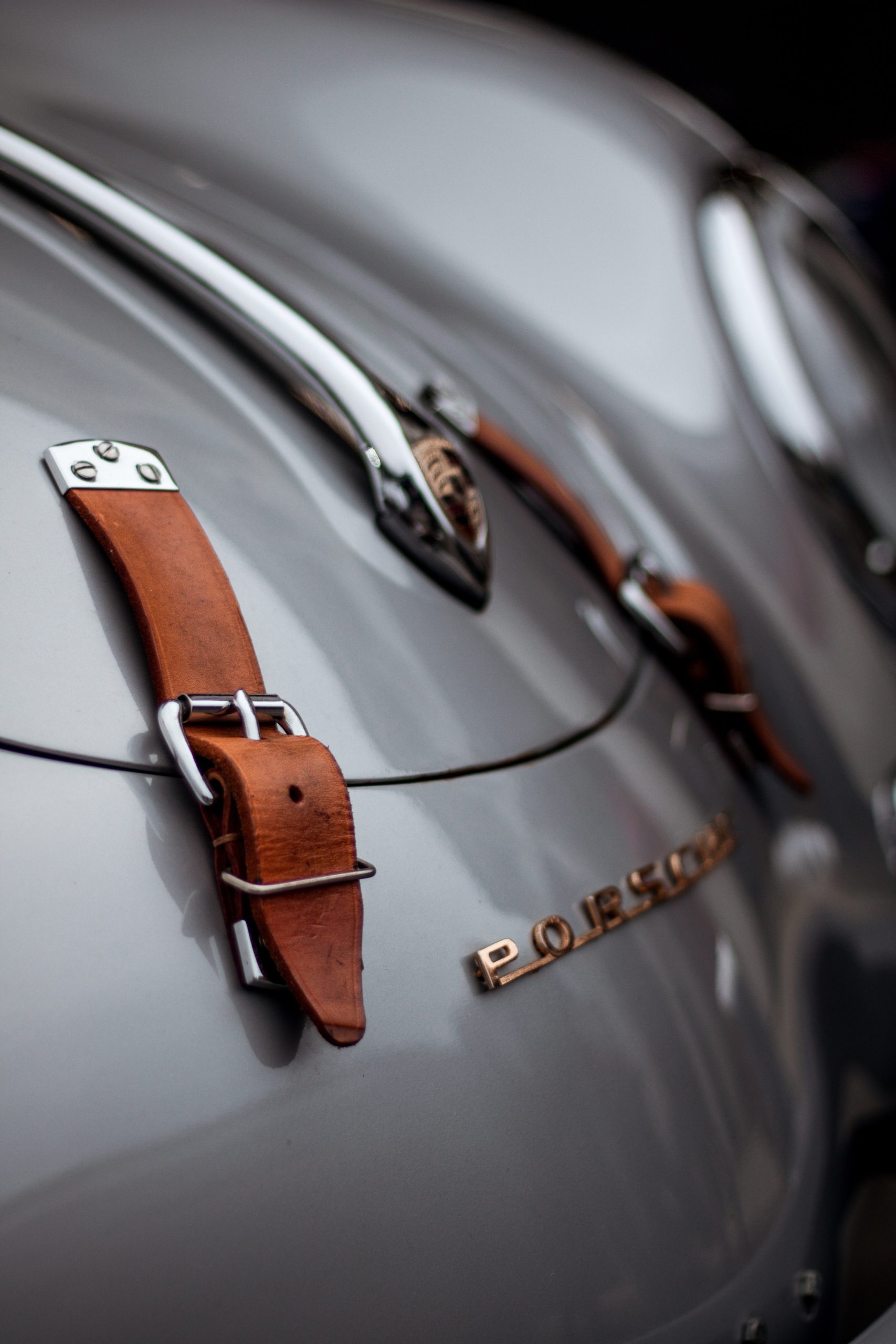There are 934s, and there are 934s… The Porsche 934 has long lived in the shadow of its more powerful...
96 results for
930 research
Porsche 930 to 935: The Turbo Porsches – by John Starkey © Veloce Publishing Ltd Much has been written about...
Officially licensed with the ACO, the organisers of the annual Le Mans 24 Hours race, this lavishly illustrated book is...
Only 50 units made. The 911 Turbo Limited Edition comes equipped with the 330 bhp power unit normally only available in the 911 Turbo with Sport Equipment. In addition, the fitment of a limited slip differential as standard ensures the the increased engine performance can be used to it’s fullest extent. This Limited Edition also adopts the rear wheel air intakes of the Sport Equipment version. Essentially an SE without a slantnose front.
A true collector’s piece from Porsche’s legendary Zuffenhausen factory, this 2005 Porsche Carrera GT is one of just 1,270 units...
From 1977 through the 1980s, Porsche 935s dominated Group 5, GTP, and GTX racing across Europe and North America. With...
It’s always the same with sports cars from Zuffenhausen: they’re easy to start and well-suited for comfortable travel. However, with...
When you have a company as storied as Porsche, with enthusiasts at every corner of the globe, some of those...
Some colors suit an era of 911 so well they become synonymous with that car. Oak Green Metallic is one...
One of the rarest Porsche 930 models was the hand-built 505-option ‘Flachbau’ or slant nose. This special-order Porsche package was...
With our latest price limit, we are well beyond the new price of virtually any 718 Boxster/Cayman – the double...
Singer’s latest creation celebrates the iconic Porsche 911 by turbocharging it and basing it on the 930 Turbo from the...
All images: © Dalton Watson Fine Books There are so many books that have been written on just about every...
Like a few other brands, Porsche was formed many decades ago not so much to build the perfect road car,...
Tuthill Porsche has earned acclaim in the rally world, transforming road cars into formidable rally beasts. Notably, they collaborated with...
Gruppe B Rally aspirations In the early 1980s, Porsche was keen to prove its technological superiority learned throughout the previous...
Theon Design is rapidly establishing itself as a prominent figure in the realm of 911 restomods, specializing in the 964-generation...
If you were lucky enough to visit Rennsport Reunion 7 in Monterey, California, then chances are you gazed at one...
Released at the 2003 Geneva Auto Show, Porsche’s Carrera GT was a final production version of the concept car first...
They say that the cream always rises to the top, an expression used to illustrate that if something is really...
Porsche revamps the Panamera: the third generation of the sporting luxury sedan is characterized by a wider range of digital...
This 1988 Porsche 911 Turbo underwent a custom Carrera RSR-style restoration with backdated bodywork including a classic long-hood nose section,...
For almost 50 years, the Turbo models have enjoyed an exalted position at Porsche. They stand for a distinctively high...
Porsches have scored a record 16 overall victories at Le Mans, 14 similar triumphs in the Rolex 24 at Daytona...
Theon Design is swiftly establishing itself as one of the prominent names in the realm of 911 restomods, specializing in...
The Audiobahn E6: The Porsche 911 Turbo & The 935 Welcome to The Audiobahn, the Stuttcars.com podcast focused on all things...
The third example commissioned at Rauh-Welt Begriff Los Angeles, “JennaBelle,” was individually crafted according to custom specifications by RWB’s founder,...
On the list of most intoxicating objects in the history of collecting, Porsche racing cars are certainly near the top....
Gunther Werks, a California-based Porsche specialist, has unveiled an awe-inspiring restomod of the Porsche 911 (993) at the esteemed Goodwood...
History Long regarded as the best entry-level air-cooled 911, the Carrera 3.2 remains highly desirable. It was the final evolution...
Magnus Walker’s popular YouTube series, “Other Peoples Porsche,” explores unique and fascinating Porsche cars across the country. From a 1969...
No desert mirage After canceling their initial plans due to Covid, the PCA’s annual “Porsche Parade” was back on the...
The 2022 Porsche 911 Turbo S Cabriolet is a formidable beast. The new Turbo S comes with an all-new, 3.8...
In the current era of Grand Prix and sports car racing, there is virtually no such thing as a new...
The 7-figure 911 will solve all of life’s problems Many of us, including myself, continue to watch in disbelief as...
Harry’s Garage, drove his Porsche 930S to Goodwood on setup day and as incredibly lucky. He got a closer look...
No matter who you are or where you’re from, there are three things that connect everyone that is reading this...
If there is one thing that can be said about those who are enthusiastic about, or even own, a car...
The Rinspeed Porsche R69 Turbo, aka Porsche Testarossa, was a limited production car from Switzerland. It is believed that around...
Porsche, as we all know, is a name that is synonymous with clean, simple lines that highlight the peak of...
1987 Porsche 959 Komfort Born in the mid-1980s the Porsche 959 it was a technological masterpiece filtering advancements across the...
Overview The GT3s are the low volume 911s, road-going production cars homologated for what was Group 3 competition. The original...
It took Porsche twenty years before deciding to modernise its 911, yet outwardly, apart from its bumpers, the new 964...
Almost Extinct The Porsche 911 came very close to extinction. American Peter Schutz began his tenure as CEO at Porsche...
Story by Karl Ludvigsen Creating his own car company was “an old idea of my father’s,” Ferry Porsche recalled. The...
Breathtaking DP Motorsport 935 DPIII Custom Porsche Based in Overath (near Cologne) in Germany, DP Motorsport was founded in 1973...
The Porsche 356 was the first production car from Porsche. Earlier cars designed by the company included Cisitalia Grand Prix...
Let’s face it, the Porsche 914 was not the most iconic of sports cars in the storied history of the...
The Porsche 911 Carrera 3.0, which was produced for only 2 years in 1976 and 1977, is a very special...
Sorry, but you do not have permission to view this content....
Note: Some images from this article provided by Roger Katz. The Type 964 Porsche 911 was a revolutionary car when...
Some pretty interesting Porsches are currently being offered at Bring A Trailer at No Reserve: a 1964 Porsche 356C Coupe,...
California-based luxury specialist Singer just released their first reimagined Porsche 911 (Type 964) Cabriolet. After getting some requests from owners,...
Sorry, but you do not have permission to view this content....
August is here, which for the classic car world can only mean one thing; Monterey. Ever since the 1950 Pebble...
I just love the Porsche 930 Turbo built between 1978 and 1989, with her massive rear ‘whale tale’ wing and...
If you’re like a few of us here at the StuttCars office, you’re the kind of person who has gained...
Personally, I just love the Porsche 930 Turbo, especially the 3.3-Liter version made between 1978 and 1989, with nearly 19,000...
The replacement for the SC series came in 1984 as the 911 3.2 Carrera, reviving the Carrera name for the first time since 1977. This was the last iteration in the original 911 series, with all subsequent models featuring new body styling and new brake, electronic, and suspension technologies. Almost the same galvanised body as the SC. Engine was claimed to be 80 per cent new, and the first production 911 to feature an ECU to control the ignition and fuel systems.
The 911 SC effectively replaced the 911 S and was one of Porsche's first models that was meant for the international market. It was sold as a cheaper alternative to the 911 Turbo. The SC used an unblown version the 930 Turbo unit that offered 180 to 200 bhp depending on model year. Options included the rear whale tail, front chin spoiler, Bilstein dampers, 16 inch wheels with Pirelli P7 tires and sports seats. Sometimes dealers lumped these options together to create their own sport package. It was available as a Coupe and Targa from 1978 - 1983, while the Cabriolet version was only available in 1983.
Porsche 911 (G-Series) (1973 – 1989) Story & History G-Model – The 2nd Generation Porsche 911 Premiere: September 12, 1973...
Porsche 911 (997) (2004 – 2012) Story & History Type 997 – The 6th Generation Porsche 911 Official photos: 2004...
The Porsche factory had 93 Turbo chassis left. These were all transferred to Porsche Exclusiv and hand built as the very special 964 Turbo 3.6 S. They were offered with normal, or ‘Flachbau’ slant nose front ends. While the vast majority of Turbo S’ were fitted with the ‘Flachbau’ nose as a no-cost option, the Turbo S could also be had with the traditional 964 nose as well. In all, 76 Flatnose cars were made while 17 non-Flatnose (known as Package option) cars were made. These cars were also fitted with the X88 option, which increased power to 380 hp. 75 flatnose units were produced.
Porsche 908K Coupé Specifications The 908 series caused a lot of headaches at Zuffenhausen. It was developed from the 907,...
Porsche 908/01 LH Coupé Specifications type Racing Car production years 1968 – 1969 built at Zuffenhausen, Germany predecessor 1968 Porsche...
Porsche’s Type 904, officially called the Carrera GTS because Porsche and Peugeot were in dispute over numeric designations with “0” in them, succeeded the RSK Type 718 as the last sports-racing iteration of the 356 series. Developed after Porsche left Formula One in 1962, the 904 (as it soon became popularly known) was also the last full-competition Porsche that could be readily driven on the street. This is the full story.
19 non 'slant nose' or Package cars were made for the USA only. Very rare. The Porsche factory had 93 Turbo chassis left. These were all transferred to Porsche Exclusiv and hand built as the very special 964 Turbo 3.6 S. They were offered with normal, or ‘Flachbau’ slant nose front ends. While the vast majority of Turbo S’ were fitted with the ‘Flachbau’ nose as a no-cost option, the Turbo S could also be had with the traditional 964 nose as well. In all, 76 Flatnose cars were made while 17 non-Flatnose (known as Package option) cars were made. These cars were also fitted with the X88 option, which increased power to 380 hp.
Ferdinand Porsche (1875 – 1951) Ferdinand Porsche was an Austrian-German automotive engineer and founder of the Porsche car company. He...
Inspiration for this feature came from the post published by Porsche in December 2020. It covers the seven generations of...
Porsche 911 (G-Series) The Ultimate Model Guide 2nd Generation Porsche 911 (1974 – 1989) The Story / Timeline / Details / Model Guides / Performance & Specs / Data &...
1979 Porsche 935 chassis #009 0004 – Willow Springs International Raceway © Robert Graham Junior The phone rang, it was...
Kremer Porsche 935 K3/80 (chassis #0013) In the mid-70s, Porsche developed the 935 model, a race car homologated on the...
1981 Porsche Kremer 935 K4 – chassis #K4-01 In the mid-1970s, Porsche developed the 911 for racing, and in the...
The year 1974 will be remembered for many different reasons, depending on where you were living in the world at...
The Ultimate Book of the Porsche 356 by Brian Long © Veloce Publishing Limited Brian Long’s original book on the...
Motor Racing – The Pursuit of Victory 1963-1972 by Steve Wyatt © Veloce Publishing Limited The age of motorsport, when...
Kim Copperthite watches the Porsche 919 Hybrid Evo during its record run at the Porsche Rennsport Reunion VI, Laguna Seca,...
Anatole Lapine, 1973 Anatole Lapine who was in charge of styling at Porsche under two disparate CEOs, Fuhrmann and Schutz,...
Turbo 3.0, by Ryan Snodgrass – © Parabolica Press Amongst its numerous attributes, Porsche sports cars have always been about...
The ‘white, red and blue’ 956 LHs line up at Weissach ready for their onslaught at the Le Mans 24-Hour...
The Pinnacle of Porsche Tinkerers, Here is Our List of The Best Restomod & Porsche Restoration Shops Our interest in...
Porsche Turbo: The Inside Story of Stuttgart’s Turbocharged Road and Race Cars – by Randy Leffingwell © Quarto Publishing Group...
12 Hours of Sebring, 18 March 1978: The #9 Dick Barbour Racing Porsche 935 driven by Brian Redman, Charles Mendez...
The All Time Greats – 70 Best Porsches of All Time (Ultimate List) Clearly we have been a bit of...
Definitive List of the Best Racing Cars Porsche Has Ever Raced Porsche Race Cars Porsche 917 Porsche 550 Spyder Porsche...
Porsche has made a lot of cracking 911s over 50+ years. We Pick the Best Production, Limited Edition & Race...
1974 Porsche 911 Turbo #1 chassis no. 911 560 0042. First owned by the late Louise Piëch (older sister of...
The 1989/90 change of model year saw the launch of the Porsche 911, 964 series onto the market. This 911 model was initially available as a Coupe, Targa and Convertible. From model year 1991 onwards Porsche also introduced its top-of-the-line model - the Turbo - into this series. In spite of bearing a major similarity in terms of look to the naturally-aspirated model, the extended wings remained. This meant that the new Porsche could retain its turbo look. The 964 Turbo model was the successor to the Porsche 930. The 964 Turbo was the end of an era, the last of the single turbo rear-wheel drive 911 Turbos.
Dr. Ulrich Bez (1988) Hailing from the Bad Cannstatt district of Stuttgart, Ulrich Bez, who as Porsche Technical supremo hatched...
The inspired engineer behind so much of Porsche’s success, Helmuth Bott has long remained the company’s eminence grise, but little...
Blue cover – Limited Edition Much has been written about the Porsche 911, in fact there are few manufacturers in...
Every once in a while a man or woman comes along who wants to shake the tree, turn convention on...
Modified his 1955 Porsche 356 Continental, Nowadays, it seems “outlaw” Porsches are everywhere and all the rage. Back in the...
The Group 4 racer based on the 911 Turbo (930) was called 934 and the Group 5 Porsche was called 935. The first version of the 935 looked similar to the 911 Carrera RSR. The first customers for 935 were Martini Racing and Kremer Racing. The Martini car was a full factory development, while Kremer made its own enhancements already before the first race. By 1977, the 935 was sold as a customer car for these series to race against cars like the BMW CSL.
In 1967 and 1968, the Porsche 910/8 Bergspyder was the dominant force before the 909 came along. Porsche’s 910 was essentially an updated 906 and were championship-winning machines thanks to being extremely nimble and well-suited to mountain roads. It had titanium (brake calipers), beryllium (brake discs), magnesium (wheels), electron (tank), plastic (body) and aluminium. The running gear was similar to that of a Formula 1 car, including an eight-cylinder boxer engine.


